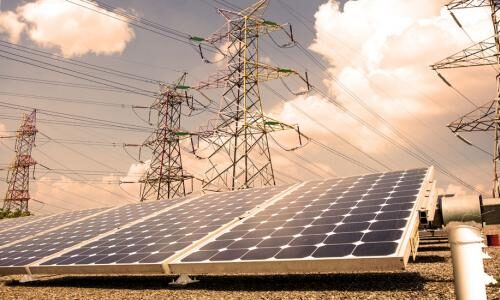Foreign dependence on energy supply became a major problem after the 1973 oil crisis and energy prices fluctuated drastically. R&D activities support the technology investments of countries, and resource utilization figures have revealed the interaction in this regard, and these technologies have become almost constant parts of our lives. Automation in the field of energy supply has been made possible by computer and communication technologies, affecting both the workforce and the economy. Equipment used in energy or raw material production facilities can be managed remotely, for example. Detecting and intervening in instantaneous emergencies also had other benefits. As technology has evolved, energy consumption has risen and device diversity has increased, which has impacted the demand side of energy. Using only burning fuel in homes, for example, can provide almost a third, or even half, of a home’s instantaneous energy use. Consequently, technology development affects not only energy technologies R&D policies but also energy policies and what energy technologies should be.
Climate change sensitivity and environmental sensitivity are presented in many studies as reasons for changes. Whenever humans have access to energy sources that negatively affect the environment, they begin to talk about environmental sensitivity. This causes me to question their sincerity on this issue. In the study, it is stated that countries’ awareness of climate change and global warming, which is the result of air pollution, increases the priority of developments in energy technology. By identifying not polluting the environment as the main concern in the transition to alternative clean sources instead of fossil fuels, I am drawn into the political and advertising-oriented nature of the project. Why didn’t we have environmental awareness while using abundant polluting resources and not thinking about saving at all, but suddenly it was decided not to pollute when access to polluting resources decreased?
According to the literature, energy technologies R&D budgets increase after the energy crisis, but decrease later. This issue is associated with the distribution of investments made in the public and private sectors. It is emphasized that because energy investments are very high-budget and long-term, the state should play an active role, and an R&D policy with many institutions’ cooperation is required. I think that this is one of the most positive opinions of the cooperation between institutions on this issue. Cooperation will not only be beneficial in terms of budget and costs but also, perhaps more valuable, the increase of trained people and the increase of beneficiary masses provide benefits beyond the energy field. As for the active role of the state, it is natural that the parts mentioned in this study are more common in fossil resources where the state has a great role and the resource ownership is in the state or administration. In fact, most of the companies working in this field are also owned by the state or administration. The private sector, on the other hand, predominantly owns companies in renewable energy sources.
In this observe, the reason for the country’s function in renewable power investments, which might be already within the personal region, has now not been given in detail. the main motive for this is that the technologies in such resources are high-priced and want help throughout the preliminary investments. this could have a fantastic effect on the discount of these fees of R&D investments, which are on the middle of the have a look at. As personal groups do no longer consciousness on troubles which includes lowering environmental impacts and the safety of deliver, the state ought to create subsidies on these troubles. the connection between the growth or lower in subsidies presented with the aid of the country and the increase or decrease in R&D budgets contradicts the look for new resources because of the constraint on fossil fuels, that is the place to begin of the problem. even as it’s far said that R&D budgets might be required particularly for renewable strength assets, that are more often than not within the palms of the private quarter, then again, they need to no longer be immediately related to the government’s budgets. whether this difficulty simply has an effect or now not may be without difficulty understood by using the truth that renewable strength resources at the moment are competing with many sources in terms of fee. even if renewable electricity assets outweigh the cost disadvantage, if government assist is wanted, the government aid requirement cited on this take a look at can be understood.




